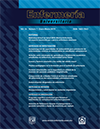Postsurgical Nursing Attention on a patient who underwent aneurysm clipping
Main Article Content
Abstract
Introduction: It is well acknowledged that nursing staff have the greatest interaction with patients and thus, nurses need to have sufficient knowledge and experience to identify the diverse needs, for example of those patients suffering from cerebrovascular disease. This condition can be a consequence of a ruptured aneurysm, which can in turn lead the patient to a critical status jeopardizing the financial equilibrium of his/her family and the health system.
Methods: The nursing process stages were developed during the postsurgical period of a patient who underwent an aneurysm clipping. The Gordon’s functional health patterns model was used to collect data, in addition to the NANDA/NIC/NOC taxonomy.
Results: Care plans derived from the nursing intervention were presented, as well as the related assessment in terms of the structure, process, and results dimensions.
Discussion/Conclusion: The CVE secondary to the rupture of an aneurysm is a serious and devastating situation for the patient, his/her family, and the health system, therefore, an adequate related nursing attention becomes of the most importance.
Article Details
Dimensions citation
MÉTRICAS
References
2. Instituto Nacional de Estadística y Geografía, INEGI. Defunciones generales totales por principales causas de mortalidad, 2008. México: INEGI; 2009.
3. Secretaria de Salud. Principales causas de mortalidad general, 2008. México: SINAIS; 2010. [Consultado junio 10 2017]. Disponible en: https://bit.ly/2jz6GXV
4. Pérez-Pupo RD, Leyva-Rojas KM. Mortalidad por enfermedades cerebrovasculares. Hospital Vladimir Ilich Lenin. Correo Científico Médico de Holguín. 2010; 14(2). [Consultado noviembre 25 2017]. Disponible en: https://bit.ly/2HiP7s6
5. Martínez-Barandalla C. Ictus: incidencia, factores de riesgo y repercusión. [Tesis]. España: Universidad Pública de Navarra; 2014. [Consultado octubre 20 2017]. Disponible en: https://bit.ly/2CuSNkZ
6. Instituto Nacional de Neurología y Neurocirugía. Folletos Científicos y Técnicos No. 1 Manual de Normas Técnicas y Lineamientos para la Prevención y Control de las Enfermedades Neurológicas en el Primer Nivel de Atención. México: INNN; 2013: 65-7.
7. Secretaria de Salud-Dirección General de Información en Salud. Boletínes de Información Estadística. México: SSA-DGIS; 2016. [Consultado octubre 20 2017]. Disponible en: https://bit.ly/2RTvHyI
8. Robbins S, Cochran R, Kumar V. Pathological Basis of Disease, 7 a ed. Filadelfia: WB Saunders Company; 2010.
9. Venes D. Taber’s Cyclopedic Medical Dictionary. 17 a ed. USA: F.A. Davis Company; 1993.
10. Claiborne W, Ridner M. El Manual de Terapéutica Médica, 7 a ed. México: SALVAT; 1993. p.574-9.
11. Mejía CJ, Niño de MC, Ferrer ZL, Cohen MD. Vasoespasmo cerebral secundario a hemorragia subaracnoidea por ruptura de aneurisma intracerebral. Rev. colomb. anestesiol. 2007; 35(2): 143- 62. [Consultado septiembre 22 2017]. Disponible en: https://bit.ly/2JrXIVM
12. Argüeso-García M. Pronóstico de la hemorragia subaracnoidea espontánea aneurismática y su correlación con escalas de gravedad, escalas de calidad de vida y tratamiento endovascular. [Tesis doctoral]. España: Universidad de Valencia; 2015.
13. Piloto-González R, Herrera-Miranda GL, Ramos- Á guila Y, Mujica-González DB, Gutiérrez-P érez M. Caracterización clínica-epidemiológica de la enfermedad cerebrovascular en el adulto mayor. Rev Ciencias Médicas 2015; 19(6): 996-1005. [Consultado octubre 19 2017]. Disponible en: https://bit.ly/2ASGiQ6
14. Vives-Medina OT, Quintana-Pereda R, Soto-P áez N. Protocolo de actuación de Enfermería para pacientes con enfermedad cerebrovascular. Rev Ciencias Médicas 2014; 18(3): 414-29. [Consultado octubre 4 2017]. Disponible en: https://bit.ly/2CFbnpq
15. León-Román CA. Aplicación del método cubano de registro clínico del proceso de atención de enfermería. [Tesis doctoral]. La Habana: Instituto de Medicina Tropical Carlos Kourí; 2008. [Consultado mayo 4 2017]. Disponible en: https://bit.ly/2FA2XVe
16. Ángeles - Ávila G, Maciel -Vilchis AC, Cuevas-Peñaloza M, Díaz-Bernal B, Monroy-Martínez MA. Proceso de enfermería en Hospital de Ginecología y Obstetricia del Estado de México, 2016. Cuba: Convención Tecnosalud Camagüey 2017; 2017. [Consultado octubre 20 2017]. Disponible en: https://bit.ly/2RVxHFX
17. Gómez-Rojas ML, Rodríguez-Díaz BL. Situación de enfermería como herramienta para enseñar el proceso de atención de enfermería. rev.cuid. (Bucaramanga. 2010). 2013; 4(1): 544-9. [Consultado octubre 20 2017]. Disponible en: https://bit.ly/2HlWq24
18. González-Salcedo P, Chaves-Reyes AM. Proceso de atención de enfermería desde la perspectiva docente. Inv Enf. 2009; 11(2): 47-76. [Consultado octubre 20 2017]. Disponible en: https://bit.ly/2f2NEWA
19. Herman TH, Kamitsuru S. (Eds.) NANDA International. Diagnósticos Enfermeros. Definiciones y clasificación 2015-2017. España: Elsevier; 2015.

This work is licensed under a Creative Commons Attribution-NonCommercial-NoDerivatives 4.0 International License.
Enfermería Universitaria by Universidad Nacional Autónoma de México it is distributed under the License Creative Commons Attribution - NonCommercial - NoDerivatives 4.0 International
Accepted and published articles become open-access under the terms of the Creative Commons CC BY-NC-ND 4.0 license, which authorizes the reproduction and sharing without commercial purposes, provided the corresponding acknowledgments to their authors. Authors are allowed to manage a self-archive copy of the article’s published version so that they can open-access it in their personal or institutional web pages, and/or any other broad-diffusion space.

